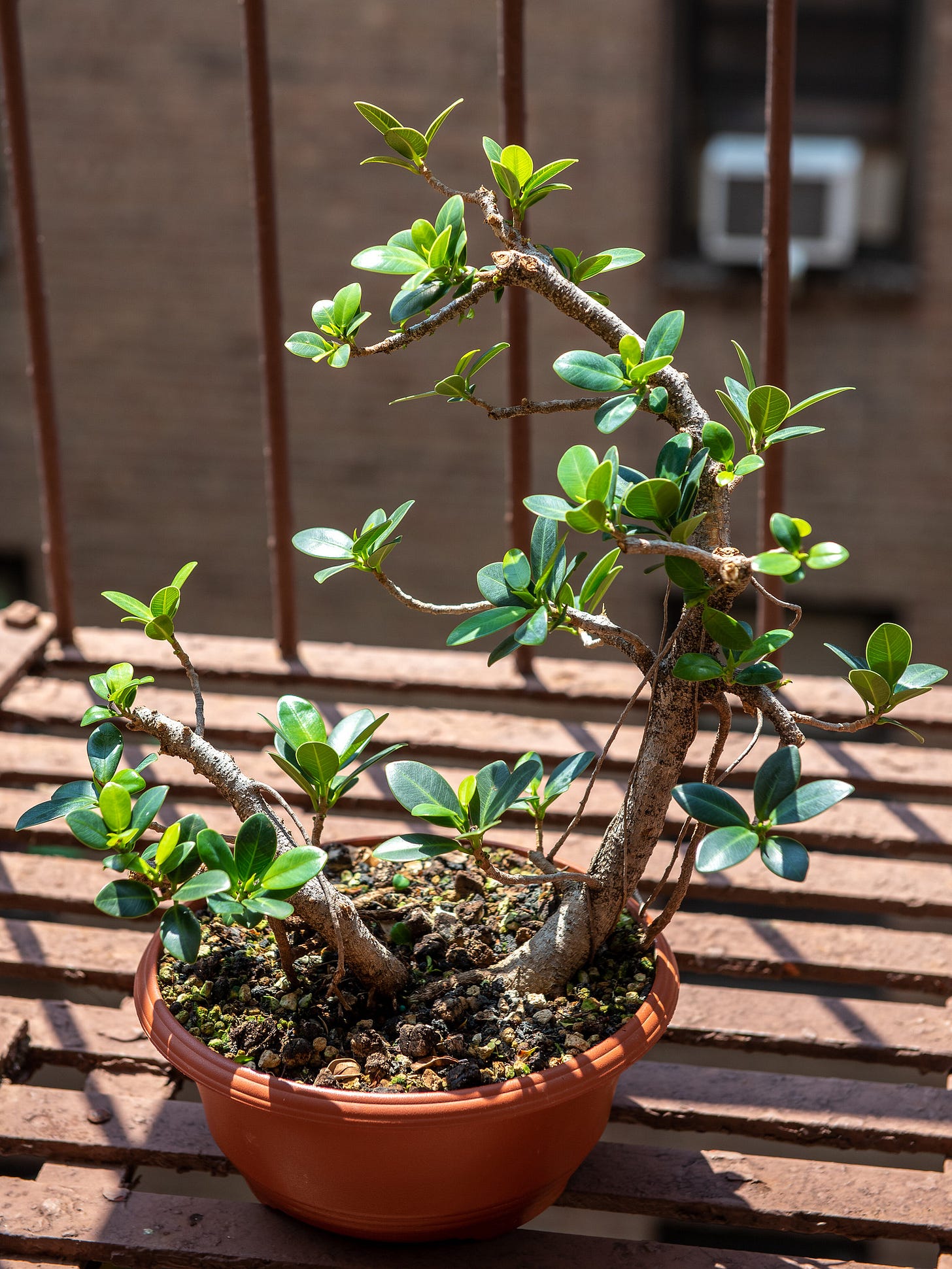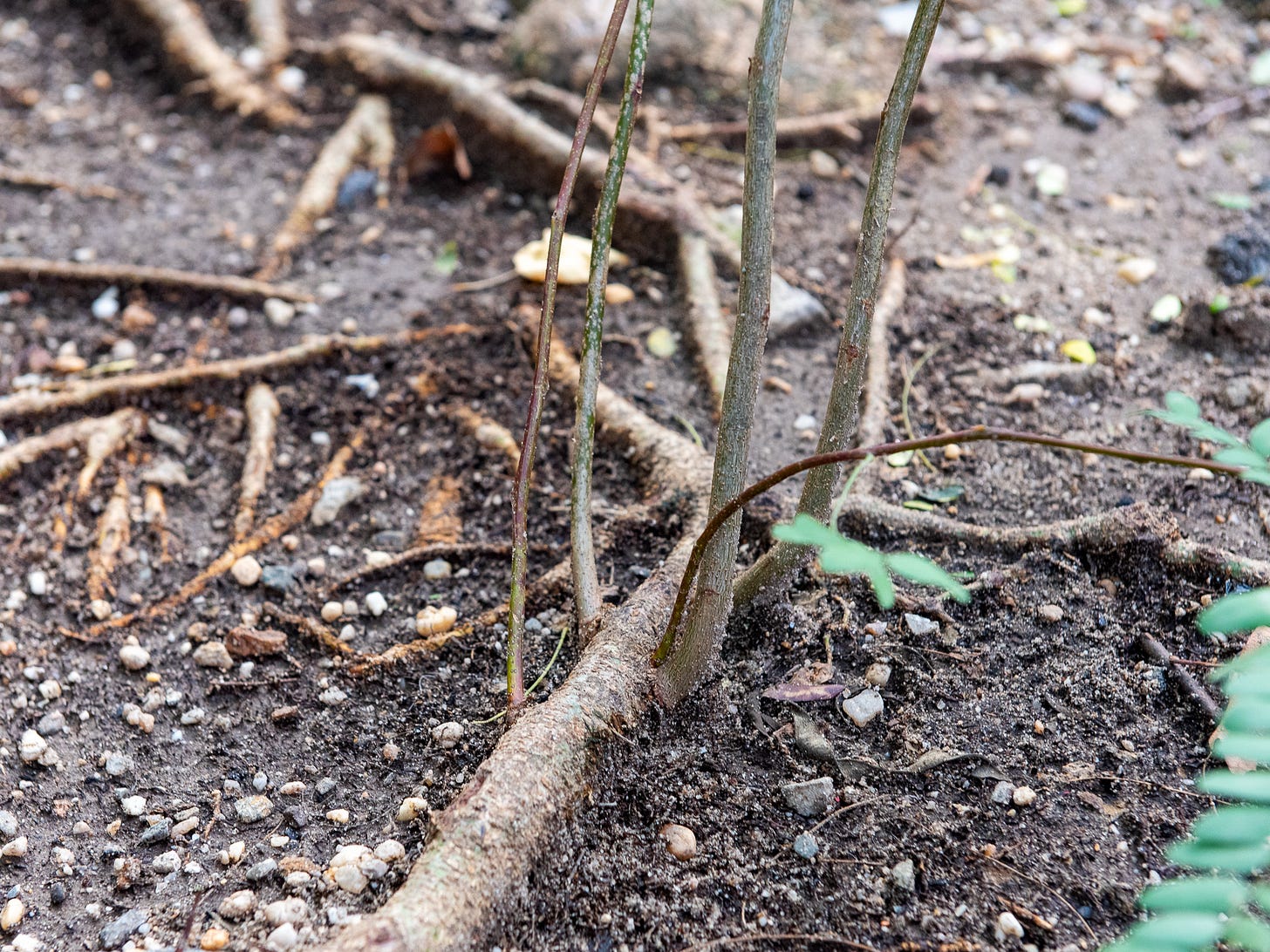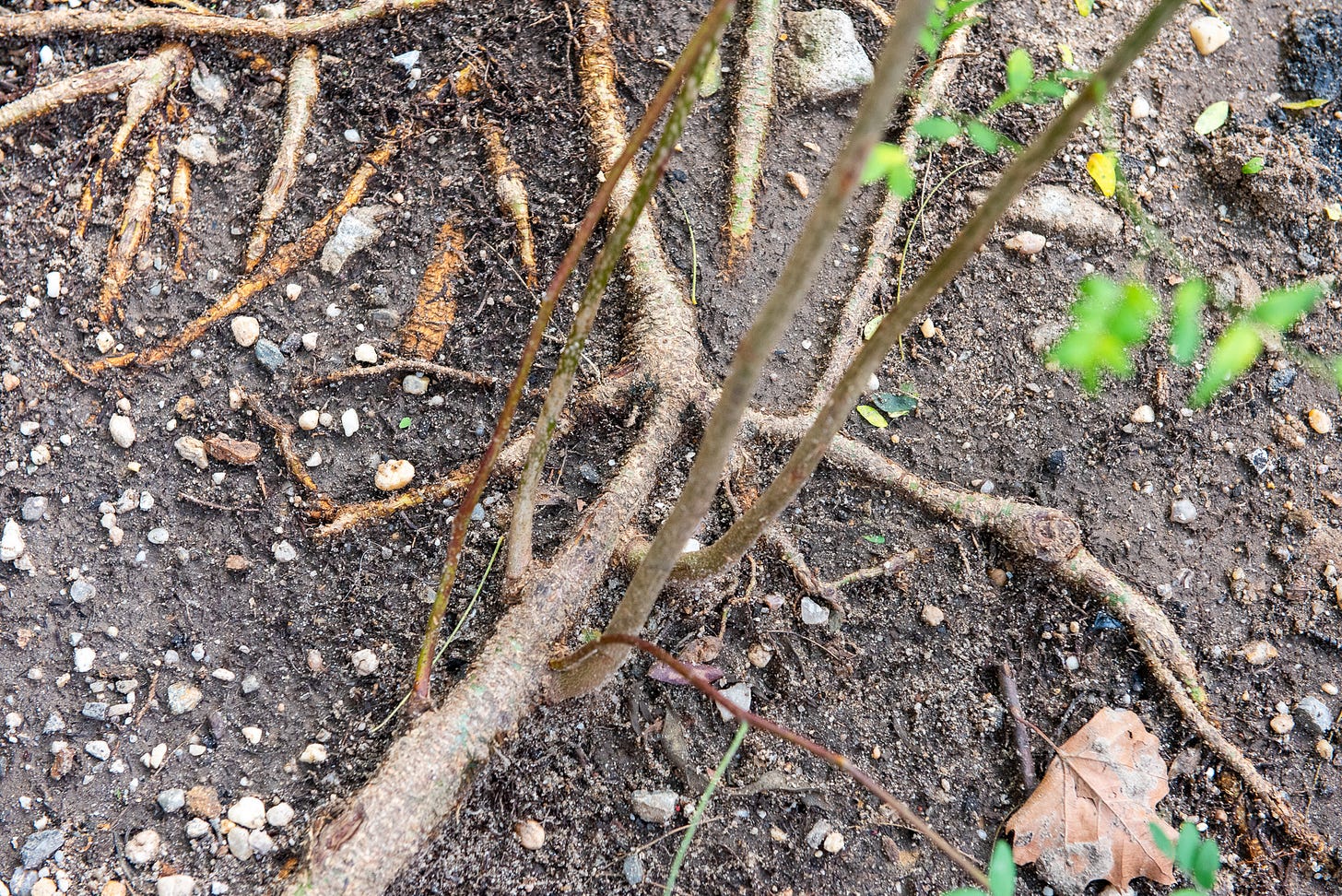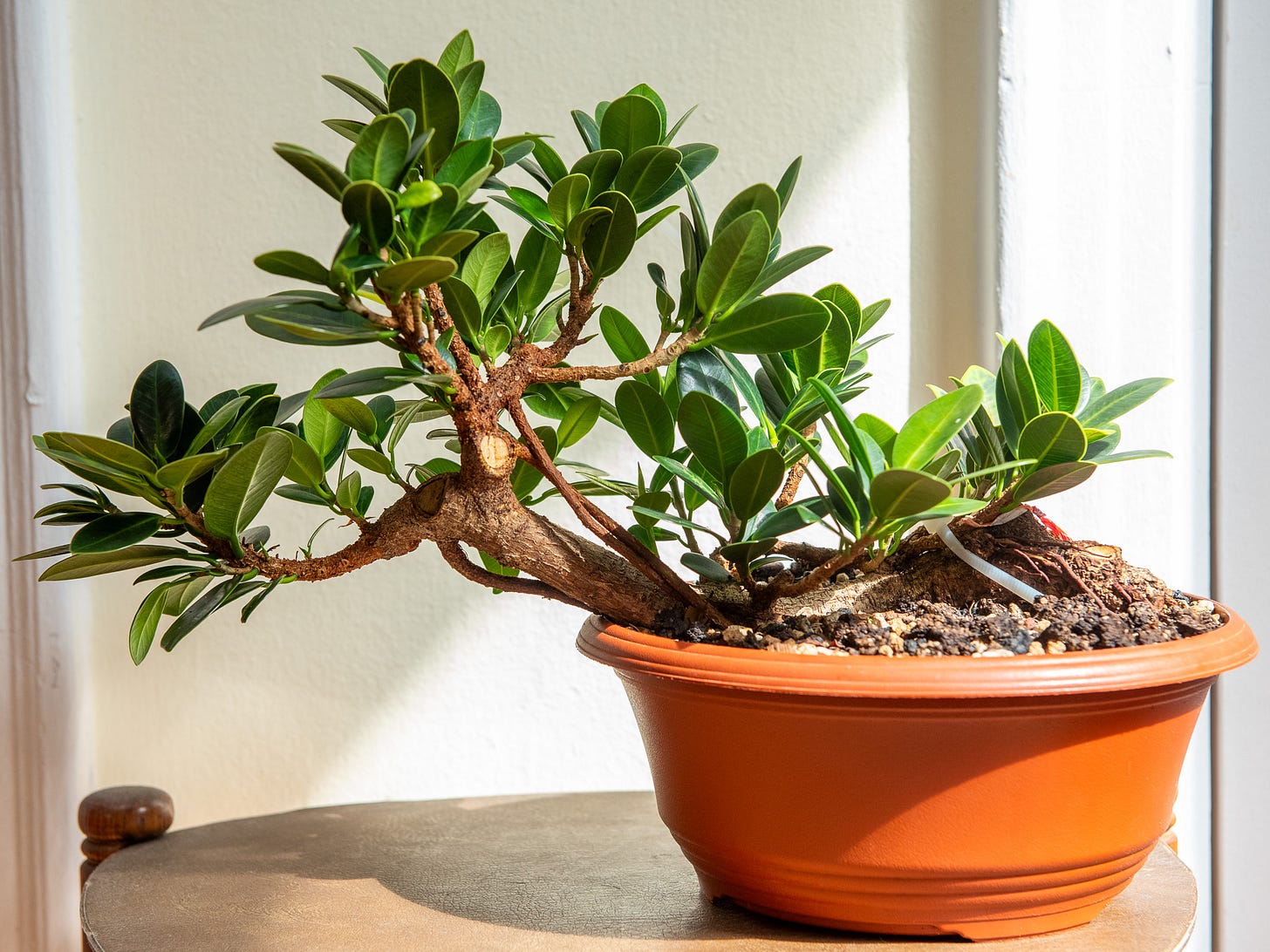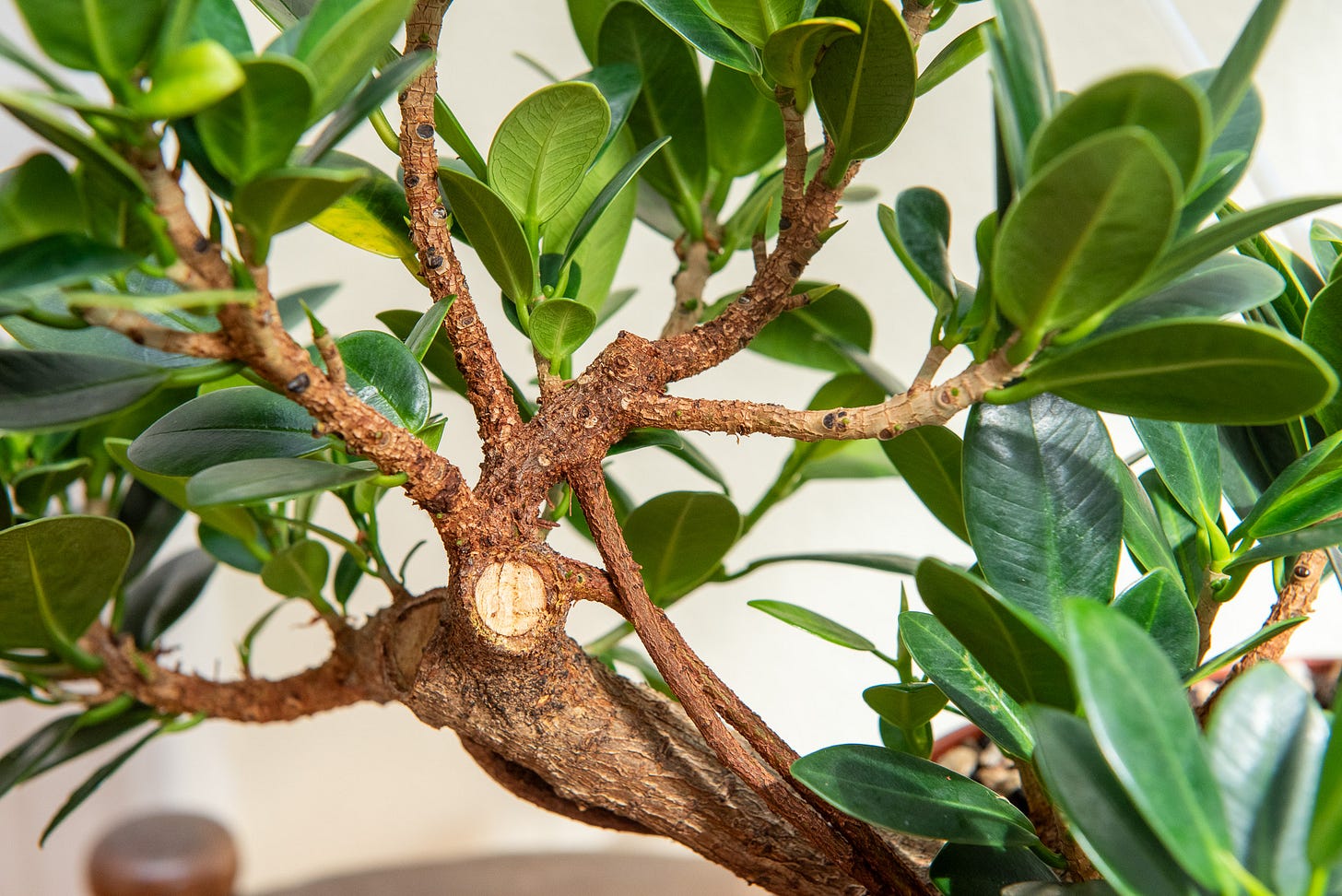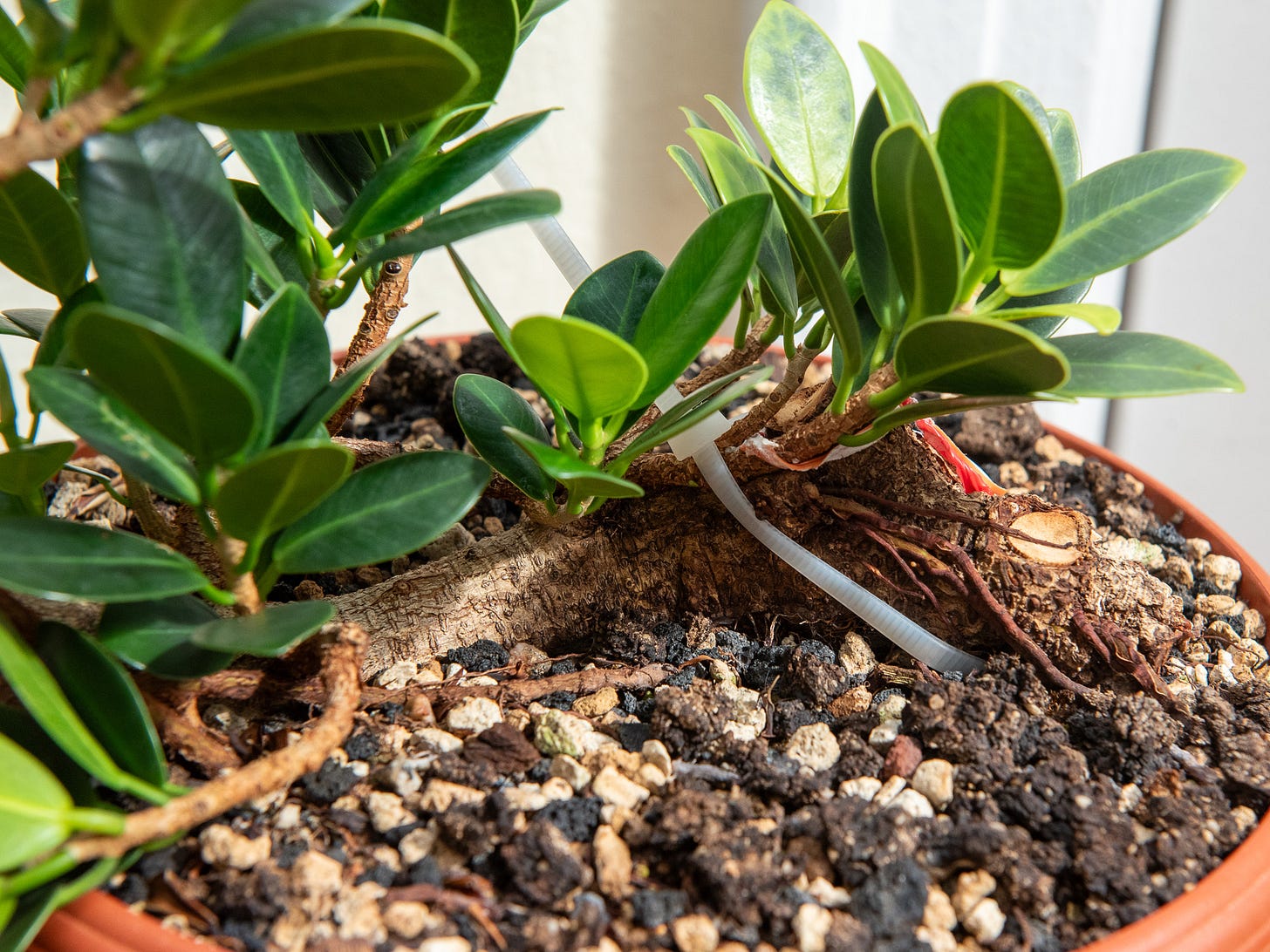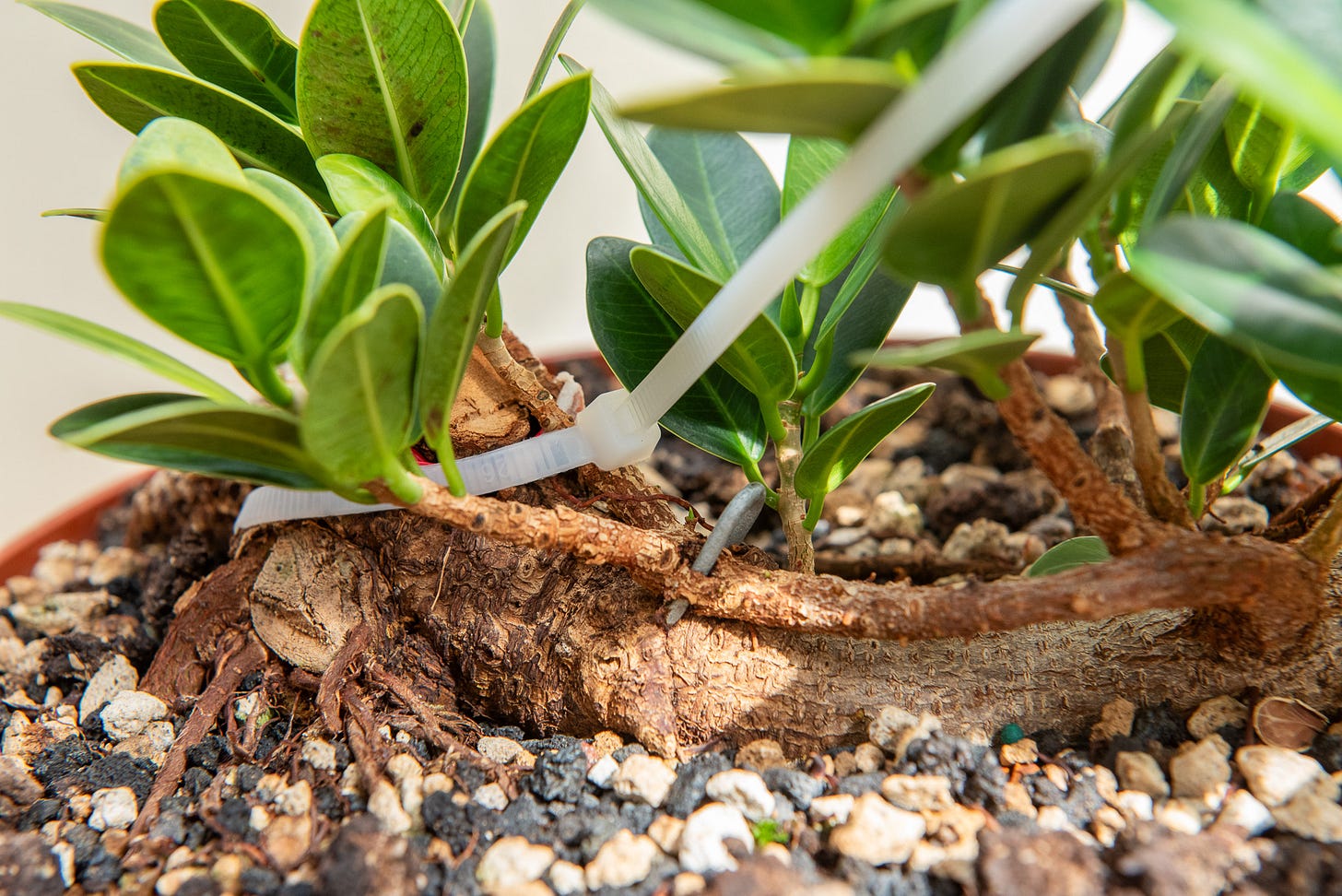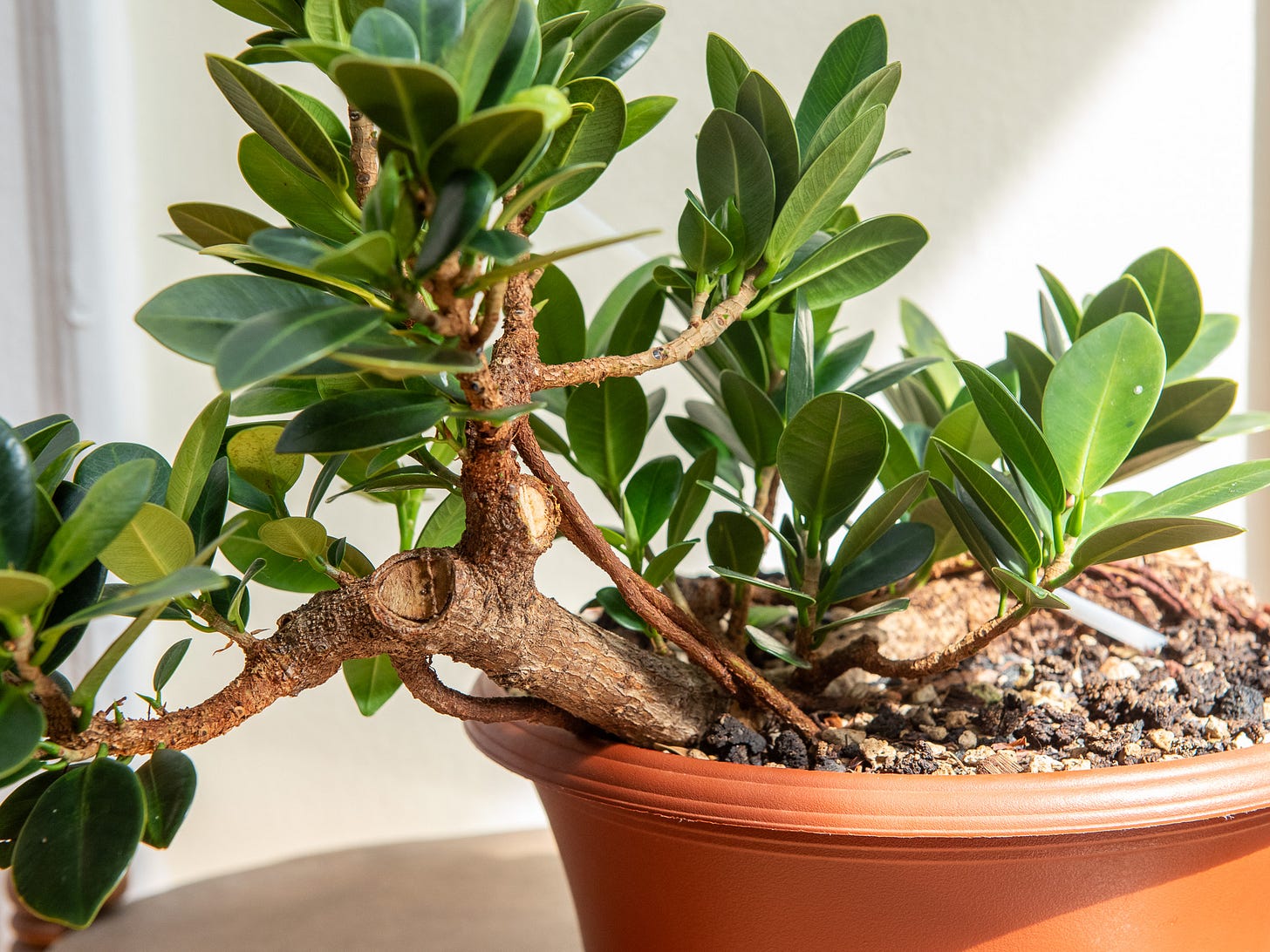A tree that falls in a forest isn’t automatically condemned to death. Death may be inevitable, but it can be postponed.
If the fallen tree retains enough of its root mass, there’s a chance it can live on in perpendicular position. Adventitious roots may form where the trunk touches the ground, and as they dig into the earth, individual branches can shoot skyward into new trees. A single fallen tree becomes an intimate forest, and the sideways trunk becomes host to a whole ecosystem of life.
This formation doesn’t have to require anything as dramatic as a fallen tree. Just the other day, I found a natural example on a locust tree in my neighborhood.
You’re looking at four sucker stems shooting off one of the tree’s roots. Left unchecked, these stems would grow into miniature trees of their own alongside the original. Many plants propagate themselves this way, growing laterally from root suckers or forming thickets of low-hanging branches that dip and root into the soil.
Of course, bonsai is all about drama, so it’s the fallen-tree version that has its own designated style, called a raft. Raft bonsai are similar to forest plantings, but all the trees are connected by a shared horizontal trunk. I’ve wanted to try one for a while, and after some scary touch-and-go moments, I think I’m on the right track.
The photo at the top of this post is how my Big Fig looked last December before I repotted it. The tree didn’t take well to the stress. Several parts of it died. It was my fault—I pushed a weak root system and did a shoddy job of repotting and aftercare. Since then I’ve let it grow free to help it recover, trimming dying branches as they finally shriveled up. All the while I studied its new form. Once the tree settled into the pot, it took the lounging position you see in the photo directly above.
This week I decided that the tree had recovered sufficiently to take some cuts. The result feels like the beginning of a raft. This part reminds me of a bushy maned lion in repose, or a coiled cobra spreading its hood.
Using the latest imaging technology, here’s a rendering of how the tree would have looked “upright.” Not bad. I like the movement.
The swollen base of the trunk shows remnants of the original root ball, adding to the illusion of a fallen tree. I’ve attached a lower branch back to trunk in the hopes of making a graft. Over time, the branch and trunk tissue should fuse together and merge vascular systems. Then I can cut the donor limb. I want to have two or three “trees” growing from this trunk besides the main mane. Trees enjoy a fluid sense of self: the one becomes the many, which return to become the one.
If you’re interested in making a raft bonsai of your own, get your advice from someone who knows what they’re doing. But I think I make decent deductions, and I have some notes—principles, if you will—about the raft-making process to share.
You need to be healthy if you expect a miracle. Sick trees lack the vigor and sap flow to survive an aggressive repot (that is, falling down). The moment I saw the state of the tree’s roots last December, I should have aborted any root pruning plans to focus on the tree’s health. If the tree looks okay now, it’s only because I removed all the parts that didn’t.
Your new form is a stranger to your old one. Stylistic achievements on the once upright trunk may not do any good when the tree lies on its side. Raft bonsai have their own aesthetic rules. Treat the former style as material for new work, rather than something inviolable to preserve.
Miracles don’t happen overnight. I’ve been spoiling this tree for nine months to get it ready for its new styling. And it has years to go before it looks like anything.
Paths reveal themselves. Young trees and branches have a way of organizing with their neighbors so that each can reach the light. Let them.
Take cuttings. Despite all your best intentions, the raft may die. Rooted cuttings are insurance for the future.
Tree reading
A 16-year-old has been charged with cutting down one of Europe’s most famous trees. However some note that it was a pretty sophisticated cut, and wonder if the juvenile is being used as a scapegoat by an adult who, if charged, could be held fiscally responsible. [BBC]
How imperial Russia created its own tropical garden in the Caucasus. [Aeon]

